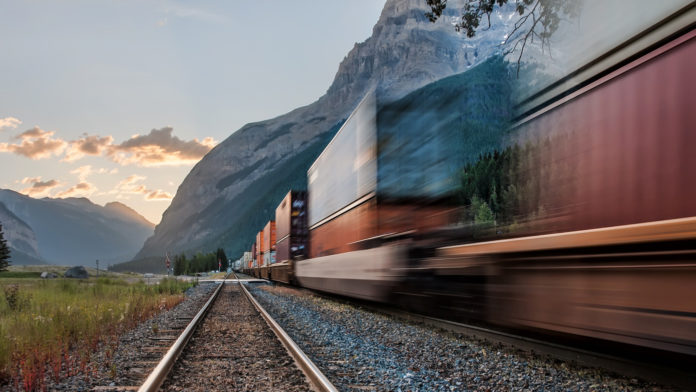Direct air capture is a promising technology for pulling CO2 straight out of the air. Turning that captured carbon into low-carbon fuels or putting it into long-term storage would help mitigate its contribution to climate change.
However, today’s devices rely on huge arrays of energy-intensive fans to bring air into contact with carbon-capturing media, holding them back from being as efficient as they could be.
That’s why University of Toronto professors Geoffrey Ozin, Alán Aspuru-Guzik, and Jeffrey MacIntosh have joined forces with US-based startup CO2Rail and an international team of researchers to instead gather air using moving trains.
The team is designing specialized rail cars to collect air from a large intake at the front that extends above the other cars and into the slipstream. That air will move through the car where the carbon capture process takes place, returning the CO2-depleted air back to the environment through an exhaust at the rear.
These rail cars are designed to be added onto freight and passenger trains as they go about their regular routes. The harvested CO2 could be stored as a liquid while on board waiting for use or storage.
Harvesting CO2 in this way eliminates the need to power fans to provide contact. Rail is also one of most efficient ways to move freight across land, using 90 percent less energy than trucks. What’s more, the design also intends to make use of waste energy from the train’s braking system — which is usually vented as heat — generating enough on-board energy to power the entire process.
The team is still working towards their first prototype. To start, each direct air capture car is estimated to be able to harvest over 6,000 metric tonnes of CO2 from the air per year, and likely far more as the technology continues to mature. The team calculated that their rail-based direct air carbon capture could be a near carbon-neutral system, and if they could expand to take advantage of the international rail network that it would be possible to harvest 2.9 gigatonnes of CO2 by 2050.
Even with the additional fuel needed to haul CO2-capturing cars, orders of magnitude more carbon would be captured than spent.
Beyond efficiency, these rail cars would not need to occupy a permanent footprint on land. Fan-based technologies would need to occupy over 20,000 square kilometres to meet global carbon capture goals.
“It’s a huge problem because most everybody wants to fix the climate crisis, but few are happy to have it done in their proverbial ‘backyard’,” said Ozin in a press release.
A rail-based system would offer several cost benefits by eliminating the cost of energy needed to actively move air, and the time and expense of acquiring land to operate on. The first car is expected to enter production in early 2023.









































